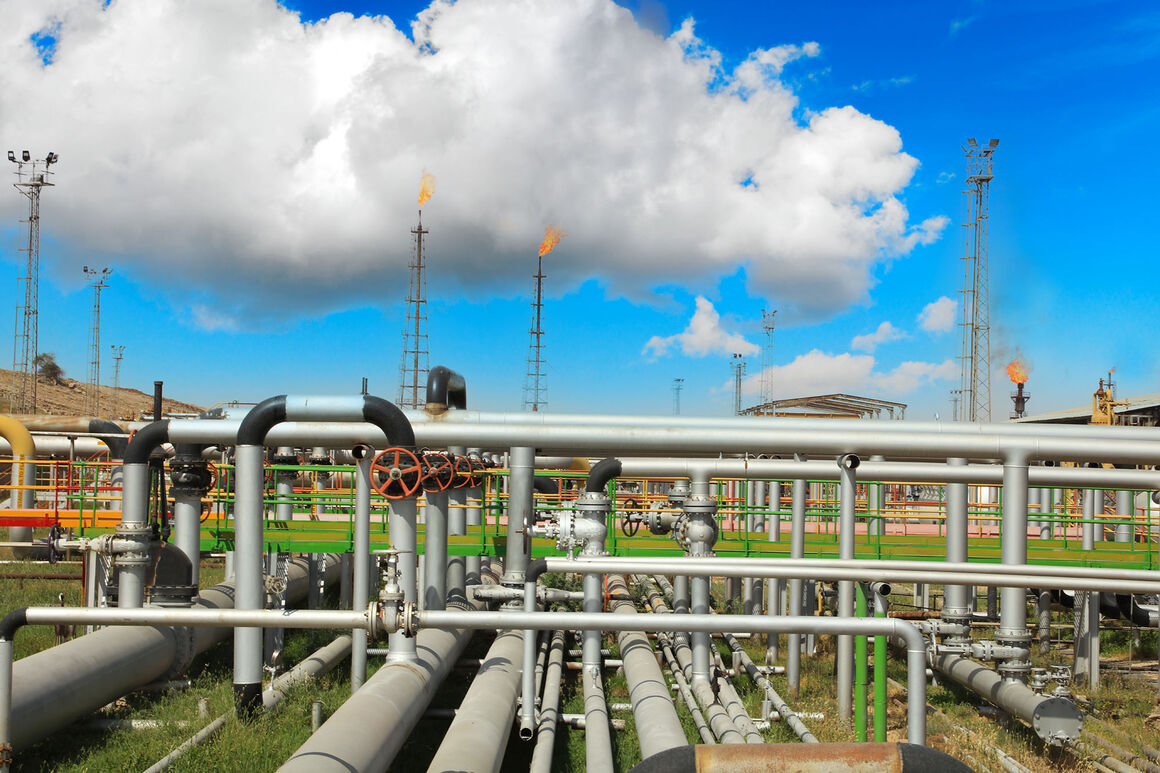"Iran Petroleum" has interviewed Hamid Kavian, CEO of MOGPC, to learn more about the significance of oil and condensate production from the trio.
How much is oil and gas production capacity at MOGPC? Where does it stand in terms of oil production among companies affiliated with National Iranian South Oil Company (NISOC)?
In terms of production, MOGPC ranks the third among five companies affiliated to NISOC. Our crude oil production capacity stands at 600,000 b/d and our rich gas output capacity stands at 700 mcf/d. In the current calendar year, in the oil production sector; oil, rich gas and naphtha production has reached 103%, 101% and 102% respectively of targets, while development and workover of wells has led to a 77,000 b/d increase in output.
How well are wells doing? What measures have been taken to prevent pressure fall-off in the reservoirs?
The reservoirs steered by MOGPC are currently in their second half-life and we inject dry gas in order to stabilize the reservoir pressure and prevent production pressure falloff at the Asmari reservoirs of Maroun and Kupal. Given the circumstances of reservoir rock and fluid, gas injection is a better choice than water injection in these reservoirs. Furthermore, about 60,000 b/d of petroleum sludge is injected into the reservoir.
How many fields are currently in the phase of development?
The Khami reservoir of Maroun and the Asmari and Bangestan reservoirs of Shadegan are currently in the phase of development and increased production. Operations have begun for enhanced production from 28 reservoirs run by MOGPC. That would result in the drilling of 40 development wells and workover of 20 wells within the MOGPC jurisdiction.
What has MOGPC done with regard to fulfilling its production engineering obligations?
To fulfil its obligations, drilling new wells is on the agenda in addition to workover of existing wells. In the current calendar year, the drilling of 6 new development wells with a flow of 6,500 b/d, workover of 22 wells and an increased output of 41,000 b/d led to a 48,000 b/d increase in output.
What has MOGPC done to reach maximum efficient recovery?
Measures such as associated gas control, return of petroleum sludge and injection into reservoirs, gas injection, planning to install downhole pumps and applying new technologies in drilling like horizontal drilling, are among the most important measures we are doing for maximum efficient recovery (MER). To that end, 746 mcf/d and 138 mcf/d of gas is injected respectively into the Asmari reservoirs of Maroun and Kupal.
An important issue with MOGC is to gather associated gas from oil fields. What measures have been taken to that end? How much gas has been recovered?
Currently, more than 82% of associated gas is recovered, and 5% is used for domestic purposes. With the commissioning of pressure compression installations by a domestic company in the form of selling flare gas, the associated gas gathering would increase 4% soon, while within three years, the remaining 9% would be also gathered within the framework of agreements reached with petrochemical companies, and gas flaring would fall to zero.
How is associated gas being consumed efficiently?
Through initiatives, about 40% of flare gas has been gathered over recent years, part of which having been assigned to the private sector for sweetening and compression. That resulted in a 50% decline in flaring. Apart from that, supplying gas to various units by using flare gas is also another measure we are undertaking to reach zero flaring.
Production companies have supported domestic manufacturing. What has MOGPC done to that effect so far?
A total of 250 items of commodities, i.e. 2,800 parts, was manufactured domestically by spending about IRR 33 billion. Furthermore, 160 parts were repaired, costing about IRR 12 billion.
Would you please explain about overhaul of pipes and installations at MOGPC?
Workover is a routine process in any operating company. But in terms of significance, the overhaul of the Asmari gas pressure compressor of industrial plants No. 3 of Maroun over only 15 days in full respect of safety and environment standards, overhaul of the Asmarai gas pressure compressor No. 1, which reduced gas flaring and guaranteed petrochemical feedstock supply, as well as the overhaul of an auxiliary pipeline for the transfer of 10 mf/d of gas are among our most important overhaul projects.
An issue the minister of petroleum has always insisted upon has been to recommend that companies use the potential of knowledge-based companies and startups. What has been done to that effect?
We have largely neutralized hostile sanctions imposed by enemies through cooperation and sharing knowhow with knowledge-based companies, startups and domestic manufacturers. Though domestic development of modern knowhow pertaining to domestic manufacturing of equipment and development of cutting edge technology, there is no need for foreign knowhow. Under the present circumstances, we have supplied our commodity needs through domestic companies. It is noted that the petroleum industry’s trust and the company’s provision of technical consultation to the private sector has been instrumental in achieving this goal.
A major achievement of MOGPC has been to use mobile separators that help protect the environment. What else has been done to protect the environment?
A major achievement of MOGPC, which is important in terms of protecting the environment and hydrocarbon resources, is the recovery of about 106,000 b/d of oil through mobile oil separators (MOS) and mobile oil treaters (MOT). Furthermore, for the first time at NISOC, an oil and gas separator was installed at the Maroun No. 3 industrial plant whose completion and commissioning would help flow any category of oil into the fuel facility. Other measures undertaken in favor of the environment include replacing the flare tips and combustion system, injecting 99% of desalination wastes into disposal wells, planting about 50,000 trees around the installations, giving petroleum sludge to the private sector for recovery, implementing the integrated project for waste management, installing equipment to combat oil pollution and building 32.2 ha of green space.
by Mahnaz Mohammad Qoli
Courtesy of Iran Petroleum


Your Comment